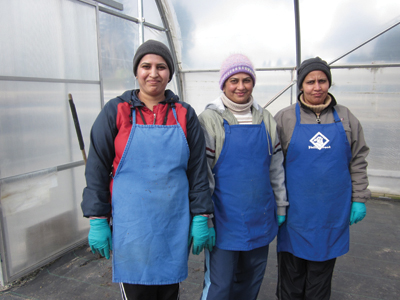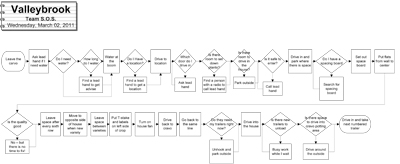
Welcome back! In this month’s article we look at the Define phase and
start into the Measure portion of the Valleybrook Lean project. The first step for any Lean project, once it has been selected, is to
pick the appropriate team to guide the project through the 120-day
cycle.
It’s great to have early and eager supporters on board, but just as important to select Lean program skeptics
Welcome back! In this month’s article we look at the Define phase and start into the Measure portion of the Valleybrook Lean project.
The first step for any Lean project, once it has been selected, is to pick the appropriate team to guide the project through the 120-day cycle.
Let’s pause and discuss the need for a maximum time frame. There are several reasons any project should be scheduled for this maximum 120 days.
It helps maintain scope, thus preventing it from turning into one of those projects that gets started and goes on and on and on… and then dies that nice, slow, painful death. A predefined time frame also allows the team to set achievable goals and milestones, allowing for the group to feel excited about the change and also engages others in the facility, as change will be visually evident.
 |
| A few members of the Valleybrook team.
|
LEAN TEAM SHOULD HAVE SIX TO 10 MEMBERS
■ Selecting the team is achieved by identifying the appropriate people, striving for a group of six to 10 people. Size does matter when it comes to quality improvement teams. Too small a team may cause the group to be narrowly focused, too large makes it difficult to get consensus and many times a larger group will fragment to smaller groups within the overall team.
Team member selection is achieved by identifying who or what departments touch the process that has been selected for improvement. Someone touches a process when they are affected by or can change the outcomes of that process.
Try to pick a balance of people between those who are “early adopters” and those who are reluctant. This diversity in team makeup will be a key to the team coming up with solutions that are more broadly accepted. Having one or two skeptics is useful because when changes are successful, these people are often the best spokespeople for talking to (and changing the minds of) other skeptics.
We call this the “20–60–20 rule.” In change situations, 20 per cent are excited for change, 60 per cent are participative, and the remaining 20 per cent are reluctant. This is natural and necessary to understand as your team moves through the change cycle.
The Valleybrook Gardens team was made up of people who completed the lay down process regularly, team leads, supervisors and managers. This diversity created an appropriate team that was open and receptive to one another’s ideas, a true testament to Valleybrook’s culture. Once all this pre-work has been completed, the team can finally meet.
SLIGHT APPREHENSION BEFORE FIRST MEETING
■ It was the usual grey-skied, drizzly March day you’d expect in this part of British Columbia when the team first got together. There was a slight apprehension in the room, as team members had never gone through this process before and everyone was wondering what to do. It didn’t take long under Paula and Greg’s guidance to engage the team.
The first thing completed as a team was to Define the opportunity. The tools used are an affinity diagram, flow map and project charter. The affinity diagram is a structure brainstorming tool that is used to take a broad question and help the team start focusing down to the root cause. The key headings from the affinity diagram are then used to create the project’s problem statement. The Valleybrook team came up with the following:
“The current process of setting out is confusing, hard to keep up, pressure filled, inconsistent, filled with bad machines and trailers, not organized, too fast to keep up, and lacks an efficient system.”
 |
|
|
KEEPING THE PROJECT ON THE RIGHT TRACK
■ The problem statement becomes your team’s guide through the
improvement process; it’s your touchstone to keep coming back to and
asking, “Are we on track?”
The next step is to create a flow chart of the process. This is one of the most important steps your team will perform. A flow chart is a visual of the process. Quality control specialist W. Edwards Deming once wrote: “If you can’t draw a picture of your process, you can’t improve anything.”
The steps to creating a flow chart include identifying the start and end of the process to be improved – this gives you the scope.
Next, using sticky notes and butcher paper, start identifying the steps of the process. This is where the diversity of the team is extremely valuable. Each member of the Valleybrook team added what they did; they discussed how their part of the process was affected by the others; and a lot of “aha’s” happened. Many times we get so focused on what we are doing that we don’t know how it affects others or whether they see value in what was done.
The team is now ready to move into the next phase, Measure. This is about creating a baseline, an understanding of what the process is actually doing, and as improvements are made, a way to quantitatively identify if it is better.
This project was funded by Growing Forward, a federal-provincial-territorial initiative.
In the next article we will walk through these measurements, how to identify and collect them and then what to do with them. Until then, keep improving.
Dale Schattenkirk is president/CEO of LTS Consulting and a certified Lean Six Sigma Black Belt, an ISO Auditor and a Certified Human Resources Professional (CHRP). www.ltsee.com
Print this page